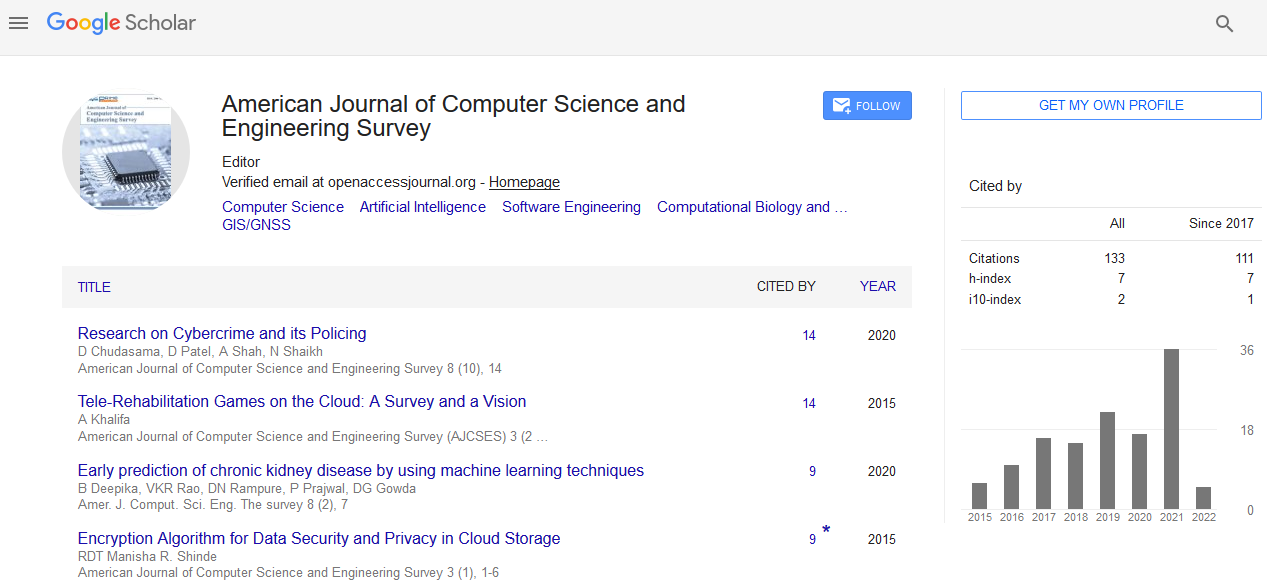Commentary Article - (2022) Volume 10, Issue 2
Practical Application of Lightsheet Macroscopy
Rebecca M. Williams*
Department of BRC Imaging, Cornell University, USA
*Correspondence:
Rebecca M. Williams, Department of BRC Imaging, Cornell University,
USA,
Email:
Received: 02-Mar-2022, Manuscript No. IPACSES-22-13014;
Editor assigned: 04-Mar-2022, Pre QC No. IPACSES-22-13014(PQ);
Reviewed: 18-Mar-2022, QC No. IPACSES-22-13014;
Revised: 23-Mar-2022, Manuscript No. IPACSES-22-13014(R);
Published:
30-Mar-2022, DOI: 10.36846/2349-7238-10.2.7
Description
Ongoing advancements in tissue clearing and optical imaging
innovations have empowered optical macroscopy of huge
scope (mm cm) bits of fluorescent tissue, working with an extraordinary
comprehension of how proteins or cell populaces
are coordinated in 3D at the tissue and organ level. The profundity
of imaging is essentially restricted by optical dissipating. A
photon can travel ~100 um through tissue before it is dissipated
(mean free way, MFP). By multiple times that distance (1mm),
every photon has strayed from its underlying way ~ten times,
so the data held inside the light is completely mixed. Optical
dispersing for the most part restricts the obtaining of spotless,
definite pictures to a couple hundred microns in natural tissues.
Outright numbers depicting dissipating coefficients (contrarily
connected with the MFP) are very tissue and frequency subordinate.
Audits on tissue dissipating sum up these properties for
an assortment of tissues and frequencies. The refractive file (n)
is a proportion of how much the particles in a medium associate
with light. The nonexistent piece of this number measures
retention, though the genuine part evaluates an easing back of
the light because of the total swaying of particles and how well
they track with the light wave recurrence. This genuine piece
of the refractive file differs with the shade of the light, and in
natural tissues goes from 1.0 in an ideal vacuum (no communication)
to 1.55 in hard tissues like bone. This assortment of
conventions empowers wonderful imaging profundities that
are now and again 100fold longer that what might be conceivable
in uncleared tissues. Tissue clearing is an old science; a
technique utilizing Benzyl Benzoate and Methyl Salicylate was
portrayed as soon as 1914. Research improvements in the previous
ten years have clarified new clearing innovations that are currently viable with fluorescent labels and now and again
even fluorescent proteins. However phenomenal surveys exist
regarding the matter, the field is jumbled by a detonating assortment
of abbreviations, and sometimes exclusive plans that
are obscure and costly. The objective for this paper isn’t to improve
or propel any of the means engaged with tissue clearing,
however to portray conventions that upgrade reproducibility
and easeofuse, and decline costs related with lightsheet (LS)
microscopy of cleared tissues, remembering mounting for
dispensable optical cuvettes. Lightsheet microscopy offers an
optimal innovation for 3D imaging of optically cleared, fluorescently
labeled tissues since it is quick (by and large not restricted
by laser checking) and the math of the sheet just enlightens
the example in the imaging plane, limiting photobleaching. The
LS math is additionally profitable in light of the fact that optical
goal is intrinsically more terrible along the optic pivot when
contrasted with different tomahawks (~/NA horizontally versus
~/NA2 pivotally). Inside this paper we portrayed strategies for
waterbased conventions utilizing promptly accessible and reasonable
optical cuvettes. With tests mounted in cuvettes, imaging
conventions and methods can be normalized, prompting
improved reproducibility and user friendly.
Acknowledgement
None.
Conflict of Interest
The author declares there is no conflict of interest in publishing
this article.
Citation: Rebecca MW. (2022) Practical Application of Lightsheet Macroscopy. Am J Comp Science Eng Surv. 10:7.
Copyright: © Rebecca MW. This is an open-access article distributed under the terms of the Creative Commons Attribution License, which permits unrestricted use, distribution, and reproduction in any medium, provided the original author and source are credited.

